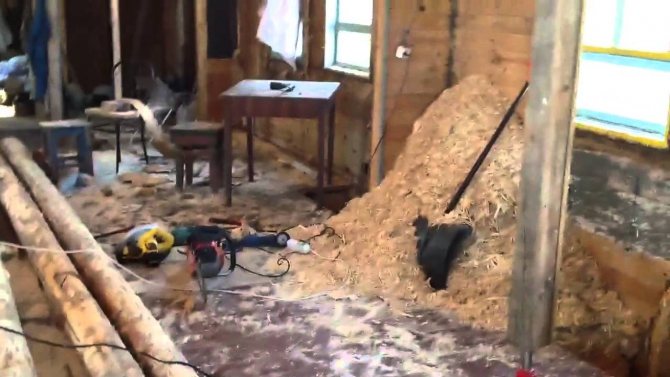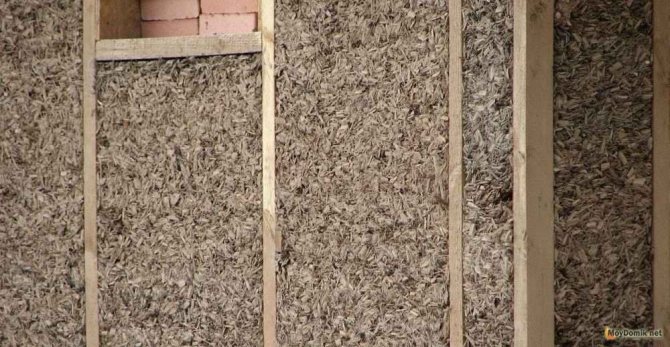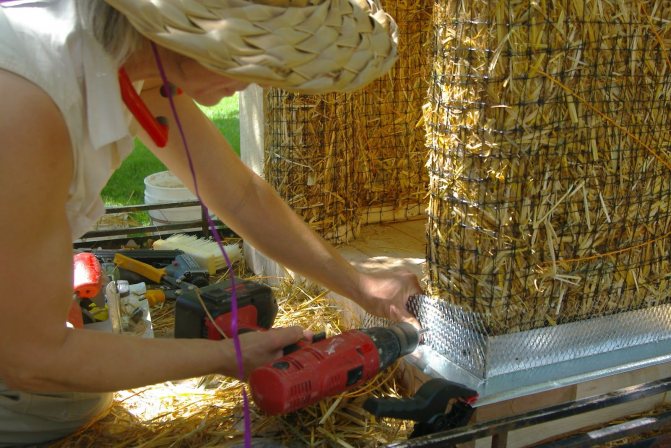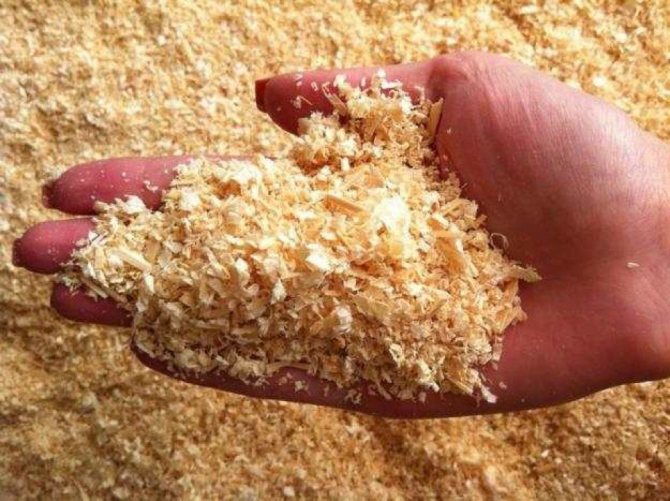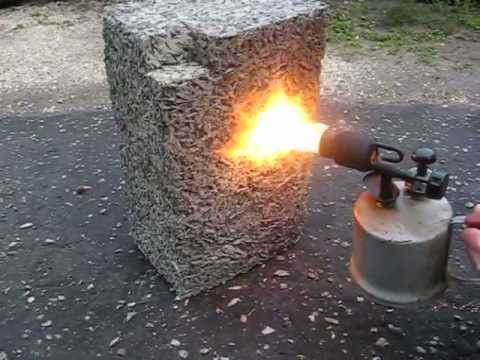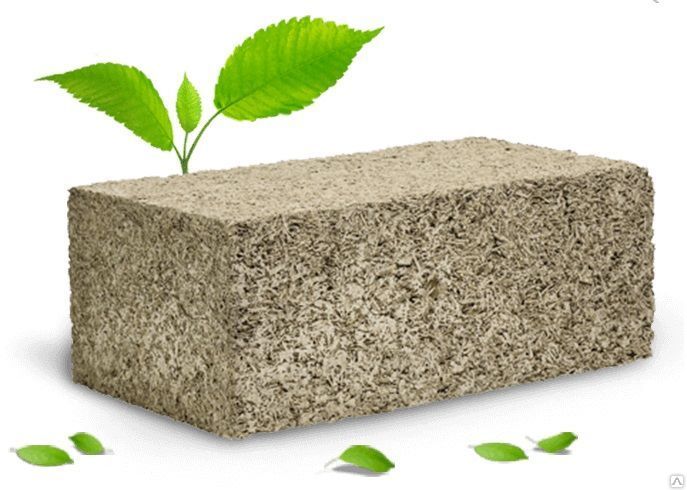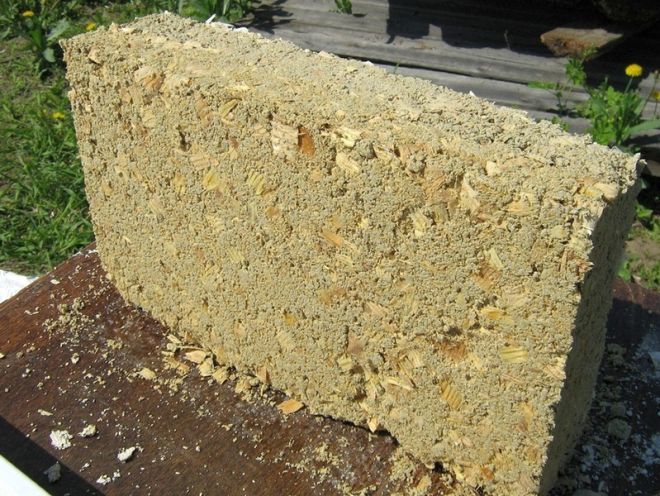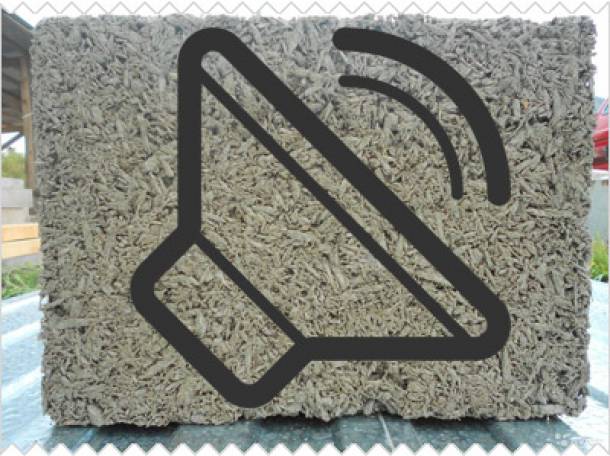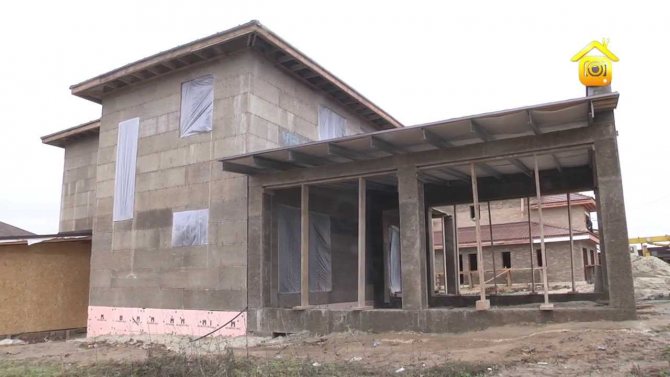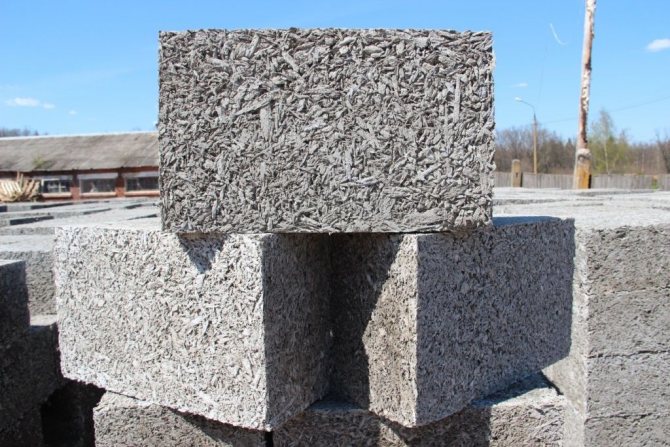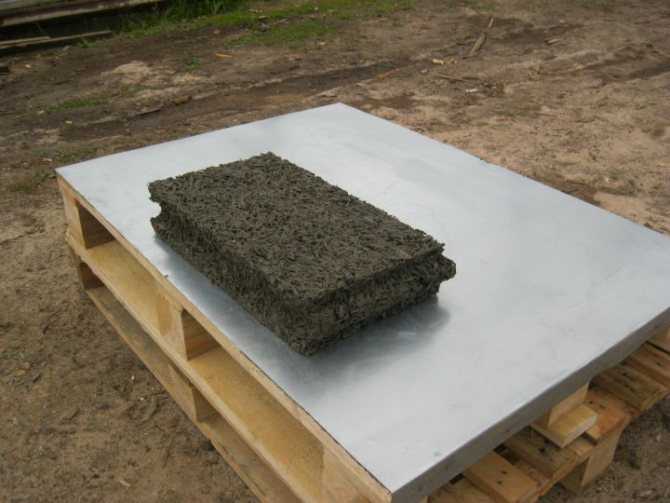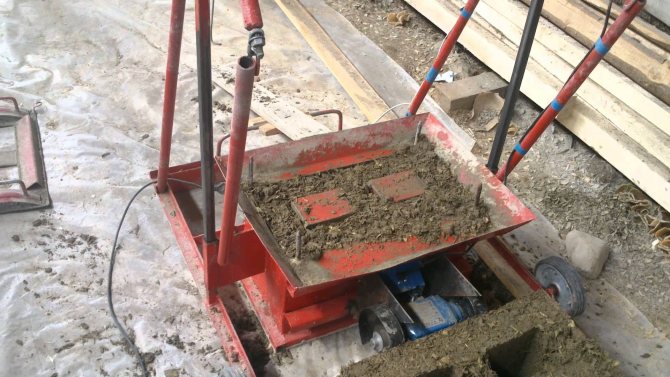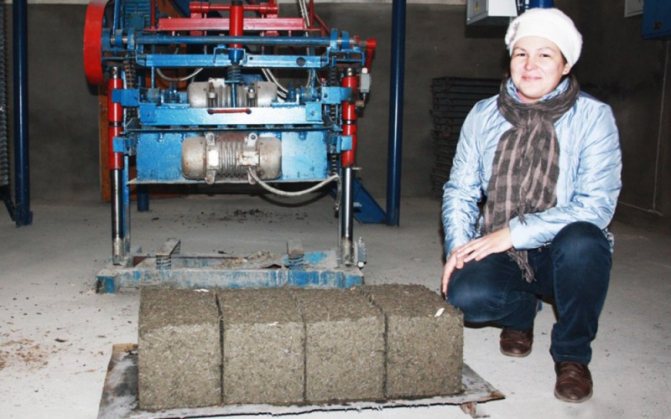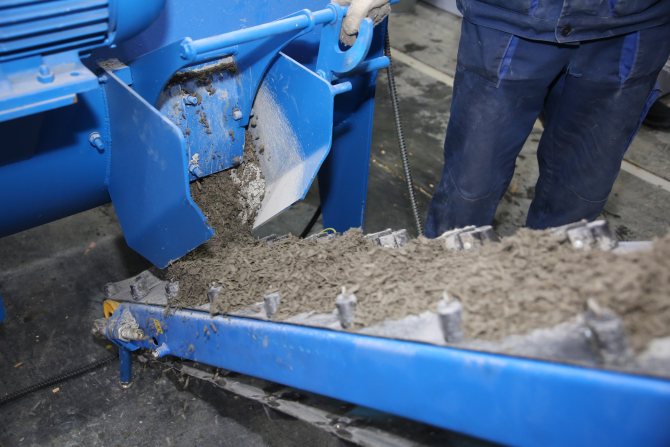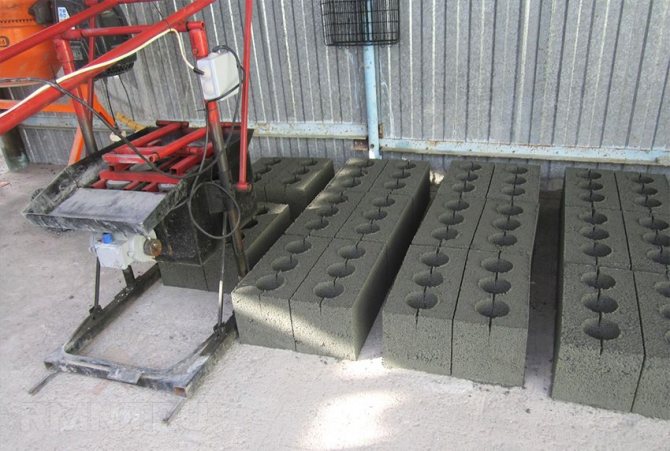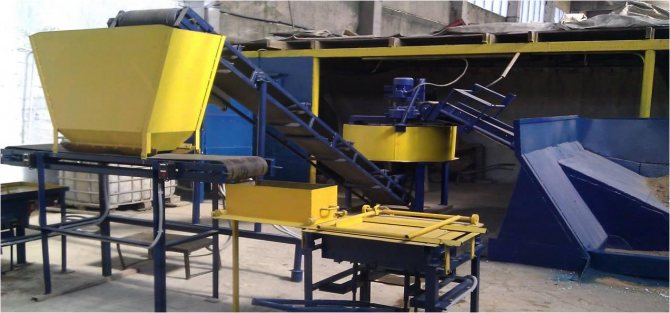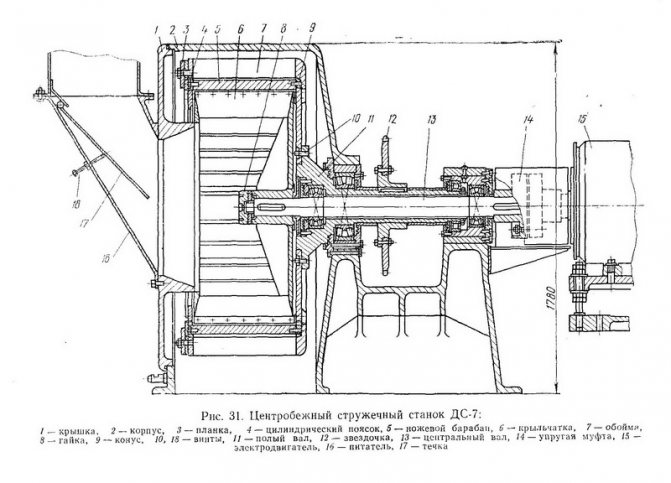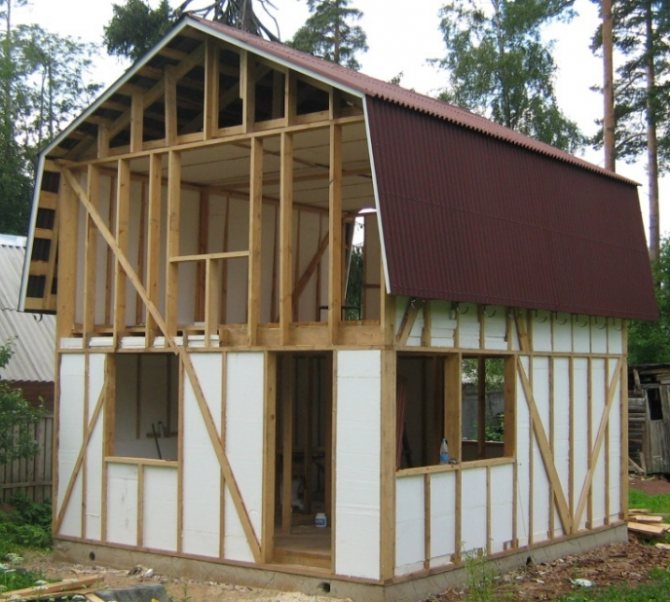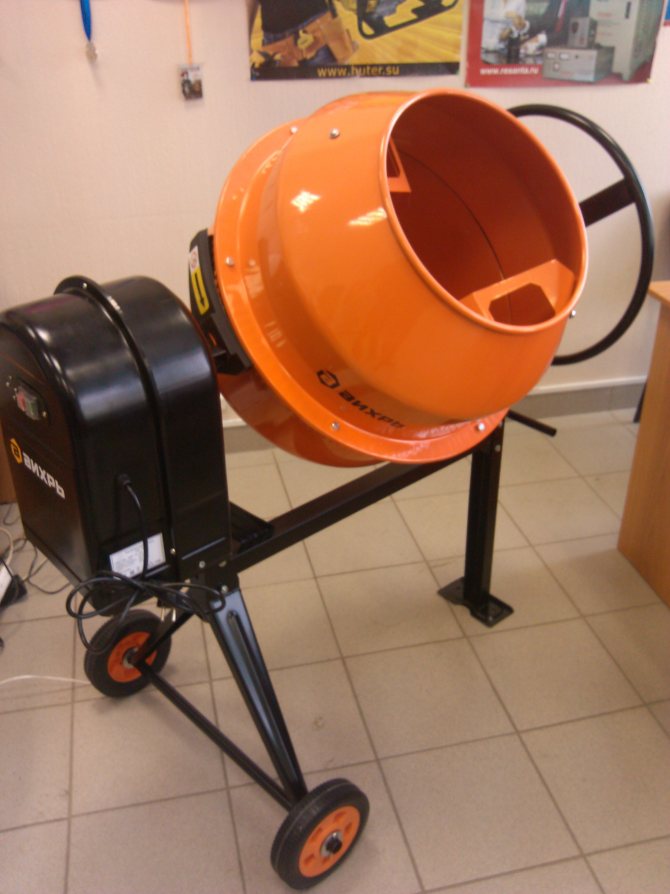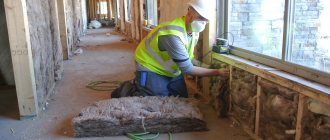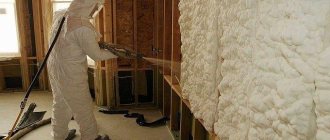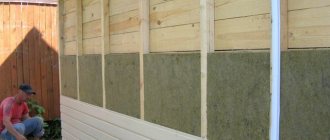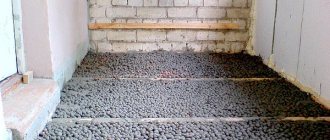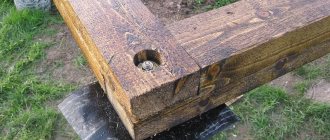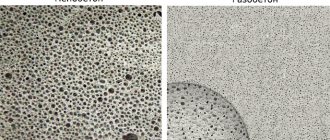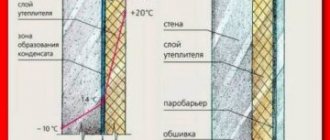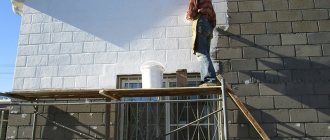What is sawdust concrete and where is it used
The material is based on strong brands of cement. When mixed with sand, mineralizers, as well as sawdust, this building material is obtained, which has high versatility. Today, a variety of designs are made from it, and also used for insulation purposes. But the main range of application, of course, is low-rise private construction. In this case, sawdust concrete is used both for the construction of residential buildings and for the construction of adjacent buildings and structures.
Grades M5 and M10 have insufficient strength for construction, being used for insulation purposes. As for the M15 and M20 brands, they are strong enough for the construction of houses.
Important! The more organic component in such concrete, that is, sawdust, the lower its strength, but at the same time the higher the insulating qualities. That is why such material is used to insulate basements and other already erected premises. With an increase in the proportion of sand and concrete, not only strength increases, but also water resistance, as well as frost resistance. These types of material are good at preventing corrosion of reinforcing elements.
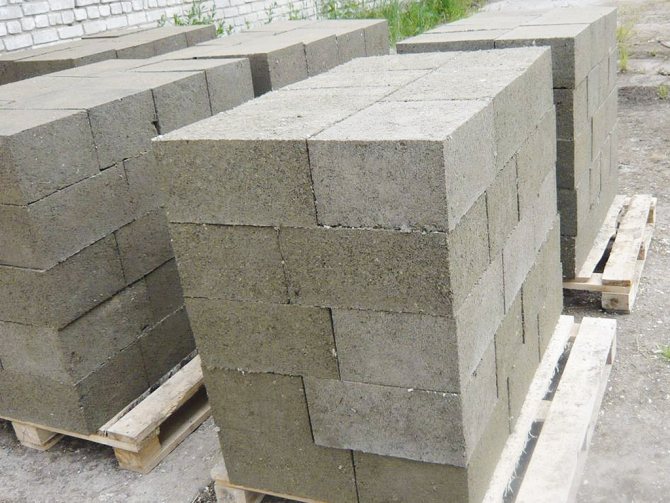
Sawdust concrete preparation technology
Making sawdust concrete with your own hands is not difficult at all. The main thing is to stock up on raw materials and devices for mixing the mixture. For work you will need:
- container for solution preparation;
- construction mixer or perforator with an appropriate attachment;
- a sufficient amount of sawdust, cement, clay or lime, quartz sand, water.
A concrete mixer can be used. To prepare a ready-made solution, raw materials can be dosed by weighing, but it is more convenient to make the composition of sawdust concrete by simple means, the proportions of the volume in buckets by brands can be seen from the following table:
In the proposed calculation, a constant amount of sawdust is taken as a basis. The consumption of all other components comes from the goal of obtaining sawdust concrete of a particular brand and a certain density. So, less dense concrete serves as a heat insulator; for the construction of supporting structures, it is necessary to use higher grades of material. If necessary, knowing the specific gravity of the raw materials, it is possible to recalculate the proportions of sawdust concrete per 1 m³ of the finished composition.
Regarding the very procedure for preparing the mixture, there are some nuances here. First, two separate compositions are prepared:
- a mixture of dry components, consisting of sawdust, cement and sand, thoroughly mixed;
- a solution of clay or lime in water.
Mixing of these parts can be done by hand or in a concrete mixer. The condition is to obtain a plastic homogeneous mass. It should not flow, and, at the same time, it should not crumble when compressed. To obtain the best strength and density of the material, as well as in order to counteract the appearance of fungi, insects, mold, table salt, aluminum sulfate, water glass, calcium nitrate are added to the solution. The proportions of sawdust concrete for the monolith and the manufacture of blocks are the same.
The advantages of sawdust concrete
- Sawdust concrete may well be made independently;
- Low weight allows you to save time and money on the construction of a large-scale foundation;
- Like gas silicate or foam blocks, sawdust concrete is extremely easy to process. If necessary, you can easily cut off the excess from it in order to perfectly fit for masonry;
- The material has high vapor permeability, which allows the walls to "breathe";
- Low thermal conductivity and moisture resistance is achieved by changing the percentage of organic and inorganic components;
- Ecological cleanliness. All components of sawdust concrete are of natural origin. Its safety is much higher than that of cinder blocks;
- Fire resistance;
- The ability to work independently without the need to involve professional builders. Naturally, for this you should adhere to the rules;
- When insulating a building, or reconstructing it with sawdust concrete, it is not required to strengthen the foundation;
- The material has a long service life. And in houses built from it according to all the rules, there is not only warmth, but also very good sound insulation.
Sawdust concrete block - what is it?
In order to have the most clear idea, let's start with an acquaintance with the composition of the material, and try to figure it out: how you can influence its performance even at the production stage.
The composition of the material and its main properties
The main raw materials for the manufacture of sawdust concrete are:
- Sawdust;
- Water;
- Sand;
- Cement;
- Lime.
Features of the composition and use of components are as follows:
- The water must be purified and meet the requirements of GOST (for acidity, for example, and other indicators).
- Cement is used with a grade of at least 400. The higher the grade of cement, the denser the finished block will be. This is the main binder.
- The sand is usually quartz.
- Sawdust - filler. It is recommended to use a product of processing of coniferous timber, since the mixture with such a filler sets faster. Spruce sawdust is ideal.


Sawdust concrete composition
Many will ask the question: how can sawdust concrete be durable if it contains organic matter that is vulnerable to biological effects? Everything is extremely simple.
In order to neutralize the effects of water-soluble sugars, chemical additives are most often used. More precisely, the wood material is pre-processed.
You can use a 10% lime solution. It is sprayed and left to act for 3-4 days, while constantly mixing the raw materials.
Also used liquid glass, ammonium sulfate. The exact recipe for sawdust concrete has not been established, therefore, the proportions of ingredients for each manufacturer are different, which directly ensures differences in the characteristics of products.
Note! If you want to increase the strength, add more cement and reduce the amount of water. The sawdust fraction will also influence the basic properties display. With an increase in weight and density, frost resistance and other performance characteristics also increase.
Now let's get acquainted with the properties of the products.
What is sawdust concrete: the main qualities of the material:
| The thermal efficiency of the material is obvious. In this respect, sawdust concrete is one of the leaders. The coefficient is from 0.07 W * ms. The maximum value, as a rule, does not exceed 0.2W * ms.
|
| Density grades are defined by values from D400 to D800. In accordance with these indicators, the sawdust block can be used in various areas of construction, from insulation to the construction of walls. Together with the density, the thermal conductivity coefficient also changes. We'll talk about this in more detail below. The photo shows this dependence. |
| Despite the content of sawdust, the sawdust block does not burn, due to the presence of a cement binder in the composition. |
| We have already talked about the composition and were able to make sure that the material does not contain any poisonous components. Moreover, GOST establishes restrictions on the content of chemical components. This applies to regulatory additives in the form of water glass and calcium chloride. |
| The frost resistance brand is responsible for the ability of the material to withstand alternately the processes of freezing and, accordingly, thawing.
|
| Hygroscopicity has not spared sawdust concrete, it actively absorbs moisture and must be protected from its effects. Moisture can not only reduce the performance values, but also destroy the product. |
| Yes, it will. Sawdust block is a vapor-permeable material. |
| The sound insulation value is about 0.6 and this is a decent indicator. The highest capacity is found in less dense products. |
| The production process is not complicated, products can be produced by hand. Below we will talk about this in more detail and figure out how to make sawdust concrete blocks. |
| Due to its large dimensions, the construction time is significantly reduced. The products are not difficult to use. The work can be done independently. |


General characteristics of the wood block
Varieties of material
Sawdust concrete does not have a very broad classification, but there are still varieties of products.
Let's consider in more detail:
- Sawdust concrete can be produced in the form of a partition or wall block. The wall product is used in the construction of walls, both internal and external. Partition blocks are accordingly used in the construction of partitions.
- Blocks can be solid or have voids of different shapes and in different quantities. They can also be deaf and cross-cutting.
Hollow products are lighter, their thermal efficiency is higher, but the indicators of strength and average density are lower.
- Wall insulation with sawdust concrete is carried out using a heat-insulating type of material. Its density is no more than 400 kg / m3, but its thermal conductivity does not exceed 0.11 W * ms. That is why the insulation with sawdust concrete is even more popular than the construction of walls using it.
And not only products are used. Monolithic sawdust concrete can be used when installing a screed or filling the frame, for example.
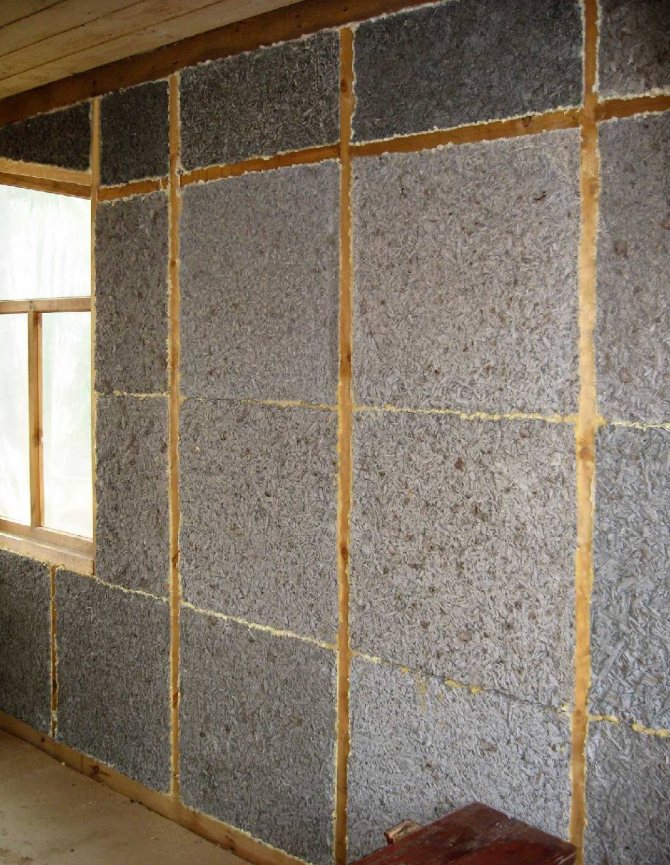

Wall insulation with sawdust concrete
- If you decide to use the material in the construction of a building, pay attention to structural products, their density grade reaches 800 (kg / m3). For low-rise construction, this value is quite enough.
The photo below shows some sizes of sawdust concrete.


Dimensions of some products
Positive and negative aspects of products
Positive aspects of the material:
- High thermal efficiency of products;
- Quite good indicators of density and compressive strength;
- Environmental friendliness of the composition and fire resistance;
- Low price for products;
- The ability to sound insulation, vapor permeability;
- Light weight of the material;
- Ease of production;
- Large product sizes;
- Ease of handling.
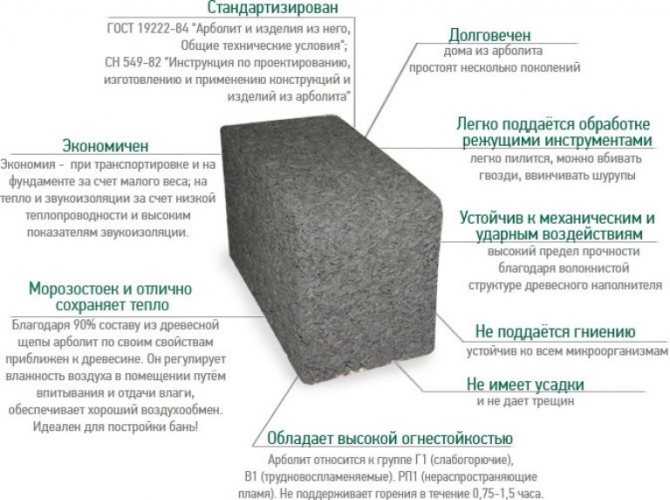

Wood block advantages
Disadvantages:
- Increased hygroscopicity;
- Shrinkage susceptibility;
- The presence of handicraft industries increases the risk of purchasing low-quality products;
- Long term for reaching brand strength, which can reach 90 days;
- The not very good geometry of the products makes it impossible to avoid finishing even if the building is an outbuilding.
Disadvantages of sawdust concrete
- Blocks of this material are springy during installation, and retain this condition for a long time. The deformation is small, but it is present;
- In many cases, the material lacks its own insulating properties, and it is necessary to carry out additional hydro and vapor barrier;
- The material gains strength for a very long time - three months after production;
- The need to focus on quality. Sawdust concrete can be made even in artisanal conditions, so the technology is often not followed. Therefore, buy such materials only from those sellers in whom you are confident, or do everything yourself in compliance with all the rules;
- Sawdust concrete walls are not very strong, therefore, it is only necessary to mount something that will have a serious load on them with a good anchorage;
- In sawdust houses, maintaining a constant humidity of less than 75 percent is an important factor. For the same reason, the use of this material in regions characterized by constant high humidity is undesirable.


One-storey house, external wall insulation with sawdust concrete.
House walls:
It is best to make the outer walls from facing bricks. It will be cheaper if
use one and a half or double bricks. Cheap and high quality to use
one-and-a-half white sand-lime brick.
Silicate brick is an environmentally friendly material, as it consists of: 90%
quartz sand, 10% air lime and water. Pigment (dye) is also added,
to make sand-lime bricks of any color.
We do the filling in half a brick. It is cheaper to use white as a backing
one and a half brick of a lower grade than the front one. It's cheap too.
Between the face and the backing, we make a cavity of 200 - 300 mm (the thicker, the better) and its
fill with sawdust concrete. The front and back masonry serves as a permanent formwork for
sawdust concrete.
Nuance: why are the foundation and basement of the house insulated? Consider just one of the reasons
- so that frost does not rise up the wall of the house. That is, if we have not built
insulated foundation and basement and the walls of the house with insulation were placed on it, then
there may be little sense from the insulation in the walls.
Frost on the frozen plinth will rise up and behind the insulation, along
inner wall. It may turn out that the inner wall in the house on the first floor
near the floor will be frozen, condensation and mold will appear.
In other words, if the frost rises from the frozen basement, then
vertical insulation in the wall will not stop it.
"How easy it is to save more than 30% on building your house"
Author:
Alexey Zhigulev. Website: https://stroyimdom.com
Page 6
The way out of this situation is very simple and cheap - if our foundation and basement are not
insulated, then you just need to cut off the frost from the base warm and durable
material - shell rock, foam concrete, arbolite and the like.
In our example, we are laying the first row of backing on a plinth that is not white.
backing one and a half (since it conducts frost), and one row of warm material
(shell rock, foam concrete, wood concrete). It is hundreds of times cheaper than insulating the foundation and
blind area.
It turned out - from below the frost was cut off from the base with warm material (backing). Between the face
(white one-and-a-half brick) and sawdust concrete is poured with a filling, frost will not rise along it
up.
We tie up the front and backing masonry using a masonry mesh with a thickness of 3
mm, mesh point 50 by 50 mm or 100 by 100. One floor can be tied 3-4 times with a net.
Sawdust concrete mix is much lighter than conventional concrete and therefore can be built
completely one floor and then pour sawdust concrete inside.The masonry mesh will bind
front masonry with backing and sawdust concrete will not be able to squeeze out the wall.
The composition of the sawdust concrete mixture:
one bucket of cement (M 400), two buckets of sand, 7 - 8 buckets
sawdust, a little milk of lime. Sawdust concrete can be compacted (vibrated)
stick in the process of pouring.
Roof:
It is cheaper to make a wooden roof.
Roof:
A good roof made of ondulin - it has proven itself well.
Screeds:
Screeds in the house can also be made from sawdust - it is very cheap, high quality and practical.
More details here - hTTp://sTroyimdom.com/sekreTi-v-sTroiTelsTve/sTyazhka-iz-opilok
Foundation:
Since the walls of the house are relatively light, the flooring of the house is wooden, the foundation will be
do not experience a significant load. If your construction site does not have frosty
heaving, then you can make an ordinary shallow foundation - it will not cost
expensive.
If the ground on which the house will stand does not experience uniform frost heaving, then
you can make two options (choose which option will be cheaper):
"How easy it is to save more than 30% on building your house"
Author:
Alexey Zhigulev. Website: https://stroyimdom.com
Page 7
- Insulate the shallowly buried foundation and the blind area around the house.
- Make ordinary flood piles (columnar
foundation).
In other words, under our future, shallowly buried foundation, we drill
in the ground (with a hand drill) several holes to a depth below the level of freezing of the ground,
insert a metal frame and fill it with concrete.
Then, on top of our flood piles, we make a shallow foundation, which is already
will be called a grillage.
.
Making sawdust concrete with your own hands
First of all, we need to decide what kind of wood will be used. The thing is that during the reaction of an alkaline medium, which is cement, with sawdust, sugars are formed, which prevent rapid hardening. In this case, pine and spruce grasp most quickly, and larch the longest.
To reduce the setting time, it is necessary to reduce the amount of water-soluble substances in the sawdust by keeping them in the sun for several months, or in water. The process can be accelerated by processing sawdust with a solution of water glass or calcium chloride. The latter is mainly used for coniferous sawdust, but the former is much more versatile and can be used with all types of wood.
This method is called mineralization, and allows the sawdust concrete to dry out in a day, which will allow the blocks to be stored. Well, after a week they can be used in construction work.
The proportions depend on the strength of the sawdust concrete. The higher the last material, the less water is added. You need to understand that the sawdust themselves absorb a lot of water, therefore, when adding the latter to the M5 and M10 brands, about 350 liters per cubic meter are required. In the case of the robust versions M15 and M25, consumption is reduced to 250 liters for the same volume. As for the other components, their consumption is usually as follows (sawdust, sand, cement, lime or clay):
- M5 - 4: 1: 1: 4
- M10 - 4: 4: 2: 3
- M15 - 4: 7: 3: 2
- M20 - 4: 10: 4: 1
The easiest way to prepare a solution is to mix all the ingredients, after which water is gradually added using a watering can with parallel mixing using the same shovel. According to one of the alternative technologies, the concrete mix is first mixed with sawdust, and then the remaining components and, if necessary, water are added. If you do not want to do everything by hand, then a mixer can be purchased, but its cost exceeds 40 thousand rubles.
Important! You can check the readiness of the mixture by squeezing a fragment of it in your fist.When squeezed, water should not ooze from the solution, but the lump itself should not crumble when you open your hand.
The finished mixture is usually poured into pre-prepared formwork blocks. It is better to soak it inside with water, so that later it would be easier to remove. The food itself is eaten in four days. Well, the drying of the blocks should be carried out in a draft, while maintaining a small distance between the building elements. The sizes of the blocks, taking into account the fact that their production is often practiced handicraft and for one's own needs, can be very different. However, usually the thickness is not less than 140 millimeters.
You can check the strength of frozen blocks by dropping them from a height of up to a meter. The structure of the material is such that no traces should remain on it.
Important! Previously, the use of lime was justified in terms of economy. However, now this material has begun to cost the same as concrete, so the practice of adding it to cement mortar is gradually becoming a thing of the past. Moreover, lime increases the hardening time.
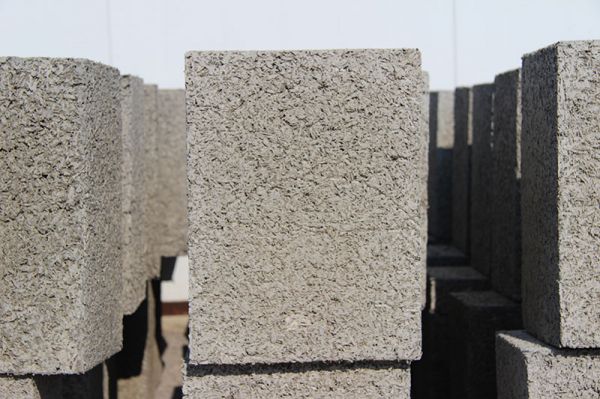

The technology of laying sawdust insulation on the ceiling
After mixing the mixture, the resulting mass is poured from above from a watering can with a solution of copper sulfate or boric acid. Water for the solution is taken at the rate of 5 to 10 liters. Thorough mixing of the mixture and solution should lead to the formation of a dense lump that does not fall apart and does not release liquid when pressed by hand. Before laying, cardboard or glassine is placed over the entire area, then the cement-sawdust mixture is distributed, the solution is tamped into voids and other hard-to-reach places. Within two weeks, the insulation should be monitored: good styling quality is evidenced by the crunch when walking and the stability of the layer.


Sawdust can also be mixed with clay as ceiling insulation. Five buckets of clay are poured with water and mixed until a homogeneous mass is obtained. A clay mixture is added to a container with wood chips, until the composition is homogeneous, medium in density... Further, as in the previous version, the surface of the ceiling is covered with a film coating, fixed with a construction stapler, a clay-sawdust solution is applied with a layer of about 5 cm for summer rooms, and for winter ones - up to 12 cm.A few days are enough for drying, after which cracks are corrected with clay.
Useful: What is a girder and how to mount jibs - special terms for frame housing
Tips for building from sawdust concrete
- The thickness of the internal load-bearing walls should be 300 millimeters or more;
- The masonry technique when using sawdust concrete, in general, is similar to the much more popular foam blocks;
- If you are using commercially available blocks, then try to choose options with a strong cement grade and ideal geometric parameters. Also, try to pull the wood chips out of the block. If it is easy to do this, there were violations during production and such blocks cannot be used;
- Sawdust concrete can be laid both on glue for cellular materials and on cement-sand mortar. In the latter case, it becomes possible to correct irregularities;
- The decoration of the outside of the house can be carried out in the same way as with other buildings. Interior decoration can be started with plaster, which will lay down as securely as possible, taking into account the high adhesion of the material;
- In the case of construction from this material in a monolithic manner, pre-moistened formwork with a wall thickness of at least 35 millimeters is stacked at a height of 50 to 100 centimeters. In this case, the layers of sawdust concrete are placed in it with a thickness of 15 centimeters, after which they are tamped. After 2-4 days, the formwork is removed. In this case, it is rearranged so that it overlaps the lower layer of concrete by about 20 centimeters;
- Construction of sawdust concrete is desirable to produce at a constant temperature of 20 degrees.It is better to do this at the beginning of summer, so that in autumn the building will gain the necessary strength.
Pros and cons of sawdust insulation
Considering the issue of the relevance of sawdust as a heater, we note that the material slightly inferior in popularity other, modern types of insulation. To understand all the pros and cons, at the stage of choosing a suitable insulation, we will compare the main characteristics of sawdust with the widespread mineral wool. So, choose sawdust insulation if you are looking for organic, porous and natural product with high environmental friendliness, excellent thermal and sound insulation... According to the results of tests and reviews of real people, the insulation of a frame house with sawdust can withstand from 30 to 40 years of operation. The material is moderately flammable.
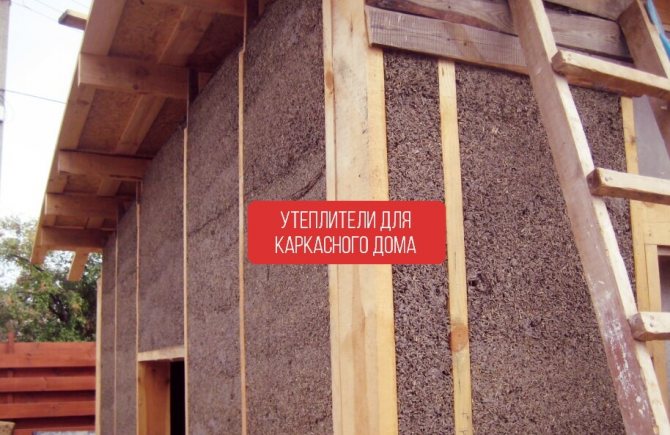

Mineral wool, in contrast to sawdust, is inorganic in nature (but includes organic components), fibrous, melts at 100 ° C, emits dust and cannot be recycled. To exploit mineral wool as a heater can be about 30 years old... In their reviews, fans of mineral wool insulation make arguments about rotting sawdust and the invasion of rodents into the space of the insulating layer. However, experienced builders say that insulating frame houses with sawdust, dried and processed using the correct technology, negates all biological factors of influence. Sawdust as insulation is one of the smartest and most beneficial ways to dispose of waste after working with wood.
Useful: Plywood: the main types and uses of the material
Varieties of insulated buildings, mixtures used
Sawdust is used as an insulating material in the process of building baths, one-story buildings, as well as houses with attics. Moreover, they can fill up at any time, after the building has shrunk.
Before carrying out work, it is recommended to dry the wood chips thoroughly, two months will be enough for this. An excess of moisture in natural raw materials can serve as a breeding ground for fungi and mold, which can very quickly spread to the walls.
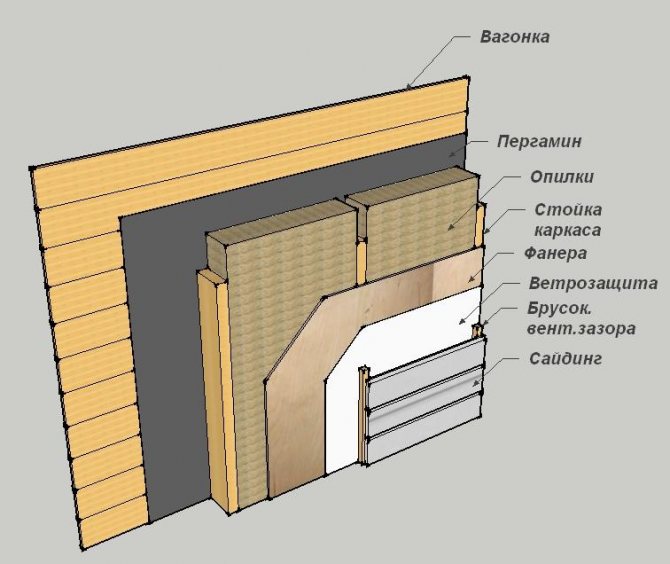

Scheme of wall insulation with sawdust.
In the process of insulating a house or a bath with sawdust, their maximum hardening should be ensured. For such purposes, it is necessary to mix the total mass with gypsum, its permissible amount will be 5% of the composition. When preparing such a mixture, it must be remembered that this substance is characterized by rapid hardening, for this reason, a large amount of solution should not be diluted at once. Gypsum may well be replaced by inexpensive varieties of cement. The mixture with sawdust ensures ease of operation and a sufficiently long drying period. The cement, having absorbed all the moisture from the wood chips, will quickly harden.
Insulation with sawdust is often associated with an increased risk of fire on the gables of buildings. It arises due to the need to free up space for wood chips, in this regard, the pediments that carry the fire function are removed. Their absence can cause strong draft, which is dangerous, especially in the bathhouse, where any spark causes an early ignition. Often, removable window sills are made under the windows, which will help to easily add sawdust as needed.
Wood shavings as a heating element for a house and a bath must be large, obtained in the process of wood processing on operating sawmills. Furniture production produces unnecessarily small raw materials that are not suitable for the types of work under consideration.
Comparison of the properties of sawdust concrete with other materials
Now let's compare sawdust concrete with other popular building materials:
| Property | Expanded clay concrete | Sawdust concrete | Gas block | Polystyrene concrete |
| Average density, D | 400-2000 | 250-800 | 300-1200 | 150-600 |
| Frost resistance grade, cycles | Up to 300 | 50 | 150 | 150 |
| Thermal conductivity, W * ms | 0,14-0,5 | 0,07-0,19 | 0,08-0,4 | 0,05-0,17 |
| Strength grade, V | M1.5-M20 | 0,5-9,5 | 1,5-15 | 0,5-3,5 |
| Water absorption | 18% | 15-20% | 25% | 5% |
| Shrinkage | Not affected | 1 mm / m2 | 0.3 mm / m2 | 0.3 mm / m2 |
